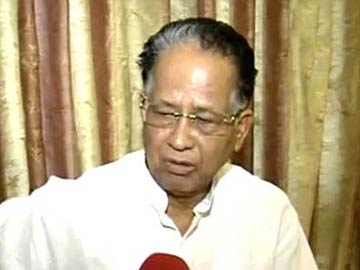Aizawl, Dec 20 : The contract with the Reliance Natural Resources Ltd (RNRL) for exploration of hydrocarbon deposits in southern parts of Mizoram has been terminated, Director of the state Geology and Mineral Resources H Lallenmawia today said.
The Director General of Hydro and Carbon, Ministry of Petroleum and Mineral Resources, terminated the contractual agreement with the RNRL due to a number of reasons, Lallenmawia said.
The main reason being failure to initiate any work by the NAFTGAZ (Ukraine), one of the three partners of the RNRL, assigned to explore south Mizoram for hydrocarbon deposits, he said.
"The company, which was awarded the contract in 2007, was yet to begin drilling and prepare estimates," sources in the Geology and Mineral Resources said, adding that the work would soon be globally re-tendered.
Mizoram is estimated to have 100 billion cubic deposits of gas.
Other firms like the ONGC and the OIL have taken up the exploration in earnest in different parts of the state, the sources said.
The OIL had done drilling in Keifang and Maubuang in Aizawl district and Thenzawl in Serchhip district while the ONGC had already discovered gas in Mizoram-Assam border Kolasib district's Meidum area, the sources added.
The Director General of Hydro and Carbon, Ministry of Petroleum and Mineral Resources, terminated the contractual agreement with the RNRL due to a number of reasons, Lallenmawia said.
The main reason being failure to initiate any work by the NAFTGAZ (Ukraine), one of the three partners of the RNRL, assigned to explore south Mizoram for hydrocarbon deposits, he said.
"The company, which was awarded the contract in 2007, was yet to begin drilling and prepare estimates," sources in the Geology and Mineral Resources said, adding that the work would soon be globally re-tendered.
Mizoram is estimated to have 100 billion cubic deposits of gas.
Other firms like the ONGC and the OIL have taken up the exploration in earnest in different parts of the state, the sources said.
The OIL had done drilling in Keifang and Maubuang in Aizawl district and Thenzawl in Serchhip district while the ONGC had already discovered gas in Mizoram-Assam border Kolasib district's Meidum area, the sources added.








 Mizoram CM Lal Thanhawla has lodged an FIR after receiving 'threatening' SMSes
Mizoram CM Lal Thanhawla has lodged an FIR after receiving 'threatening' SMSes









 Mizoram CM Lalthanhawla
Mizoram CM Lalthanhawla





















 Lal
Thanhawla had promised during campaign season that the NLUP, halted by
the ECI due to complaints by opposition parties, would be continued
immediately.
Lal
Thanhawla had promised during campaign season that the NLUP, halted by
the ECI due to complaints by opposition parties, would be continued
immediately.


 The Chief Minister had won from Serchhip and Hrangturzo constituencies.
The Chief Minister had won from Serchhip and Hrangturzo constituencies.


